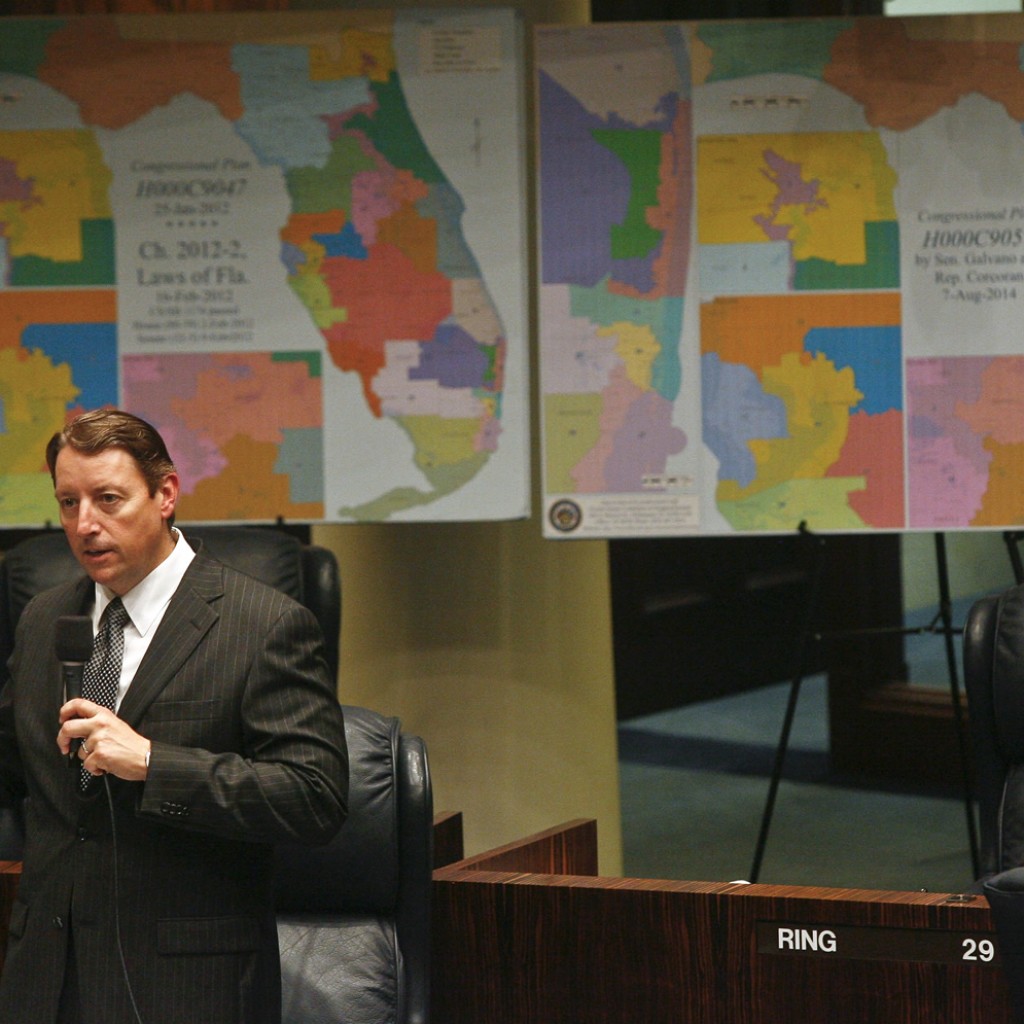
The plaintiffs in the state Senate redistricting case have reshuffled their proposed maps to redraw the state’s 40 senatorial districts, saying they want to “narrow the issues for trial.”
Part of their reason was the much-maligned “jumping the Bay,” or districts that cross the water from Hillsborough County into Pinellas County to capture a Democratic voting base in southeast Pinellas.
On Tuesday, the League of Women Voters of Florida, Common Cause and others withdrew two maps and submitted a new “corrected” map, after filing six versions of a redrawn district map last week.
In a notice filed by attorney David King, they took away one map that “includes a fourth Hispanic district in South Florida (District 38) and an African-American district in Hillsborough County that does not cross Tampa Bay into Pinellas County (District 19).”
They also withdrew another map that was “presented merely to show an alternative configuration of districts in Miami-Dade county that has three Hispanic-performing districts (Districts 35, 36, and 37).”
The plaintiffs then announced plans to turn in yet another “corrected Alternative Remedial Senate Plan, or CPS-3b corrected.”
“CPS-3b corrected is the same as the version disclosed to the (Legislature) on Nov. 18, except that Districts 1 and 2 have been replaced to exactly match the versions of Districts 1 and 2 in the other Alternative Remedial Senate Plans (CPS-2a, CPS-2b, CPS-3a, CPS-4a, and CPS-4b) …”
King’s notice also explained, “During the special session, members of the Senate and the public requested that the Legislature avoid crossing Tampa Bay in the remedial senate districts.”
His clients then “prepared and submitted Alternative Remedial Senate Plans CPS-2a and CPS-2b, which contained a configuration of District 19 that was wholly within Hillsborough County and did not cross Tampa Bay.”
However, “although there is a likelihood that the Hillsborough-only district would retain African Americans’ ability to elect candidates of choice, Plaintiffs will rely only on their alternative version of District 19 that crosses Tampa Bay in CPS-3a, CPS-3b, CPS-4a, and CPS-4b, in order to narrow the issues for trial and ensure that African Americans retain their ability to elect candidates” of their choosing.
“Accordingly, Plaintiffs withdraw CPS-2a and CPS-2b,” he said.
Circuit Judge George Reynolds will consider those maps and others at a trial the week of Dec. 14. The Senate has turned in a plan that was a mash-up of two previous maps.
The plaintiffs had sued the Legislature, alleging the current Senate district map was rigged to favor Republicans and incumbents. The Senate settled the case by admitting fault and agreeing to redraw the lines with the House.
Both chambers, however, were at odds over the best way to do that and impassed during a recent Special Session, ensuring that the courts would have to figure it out.
Reynolds now must figure out a configuration of the state’s 40 senatorial districts that abide by the state constitution’s Fair Districts amendments. They’re aimed at ending gerrymandering, or the drawing of political boundary lines to benefit particular parties or people.
The Florida Supreme Court will have the final say on a new map of districts.



